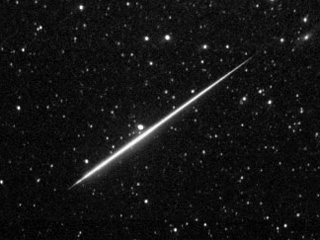
If it hadn’t been for Google’s little illustration on the search engine homepage, I wouldn’t have known that the Perseid Meteor Shower was passing through last week. My mom, ever the Weather Channel addict, was of course already well aware of that fact. So, we went outside and lay down on a blanket on the deck and stared up at the show.
The faintest opaque gray-green of grass below. Inky blackness above, punctuated by darting bats all too near, scuttling by the downspouts. Tiny brilliant pinpricks of effervescent stars winking in the domed firmament. Curdles of the Milky Way glowing dimly in the far-off reaches of the galaxy. The night-sounds were deafening: lowing cattle, gravelly singing insects, occasional hooting crescendos from both great horned and barred owls. Once a pack of coyotes started up in a chorus of eerie shrieks and howls and all the dogs within a few mile radius joined in. The night was still and cool.
And then flashes of light. Brilliant atomic particles streaming madly through the sky, living and burning as passionately as Kerouac caricatures. White sparks, flaming snowballs, illuminated for a minute, straight-shooting star, gone. A blink, an instant, a fading contrail of smoke, nothing. And then another and another, legato interludes, fizz and burn out. Magic lights painted across the sky with rapid strokes of a celestial brush. We stayed out there for an hour and a half before exhaustion overcame me and I retired to bed.
I wanted to learn more about what I was seeing. After perusing Wikipedia (which everyone knows is the single most reliable source for scientific information on the whole Internet), I discovered that “meteors” are simply the light streaks we see in the sky, meteoroids are the objects themselves (ranging in size from dust particle to 10 meters or more across), and meteorites are particles that actually strike the ground. Comets are, technically speaking, giant hunks of junk and ice and rock and stuff that are irregularly shaped, reflect only about 3% of the light that is shown on them, and usually have elliptical orbits. Due to “outgassing,” they shed particles as they travel, and these are what create meteor showers.
And, apparently, “Comet Swift-Tuttle [the very same agent responsible for the Perseids] has been described as ‘the single most dangerous object known to humanity’” by a certain Gerrit L. Verschuur. In the year 4479, there is a 0.0001% chance that the comet will collide with the earth, in which case all life with be completely obliterated. Scary thought. If you’re still alive in 2470 years, watch out.
The faintest opaque gray-green of grass below. Inky blackness above, punctuated by darting bats all too near, scuttling by the downspouts. Tiny brilliant pinpricks of effervescent stars winking in the domed firmament. Curdles of the Milky Way glowing dimly in the far-off reaches of the galaxy. The night-sounds were deafening: lowing cattle, gravelly singing insects, occasional hooting crescendos from both great horned and barred owls. Once a pack of coyotes started up in a chorus of eerie shrieks and howls and all the dogs within a few mile radius joined in. The night was still and cool.
And then flashes of light. Brilliant atomic particles streaming madly through the sky, living and burning as passionately as Kerouac caricatures. White sparks, flaming snowballs, illuminated for a minute, straight-shooting star, gone. A blink, an instant, a fading contrail of smoke, nothing. And then another and another, legato interludes, fizz and burn out. Magic lights painted across the sky with rapid strokes of a celestial brush. We stayed out there for an hour and a half before exhaustion overcame me and I retired to bed.
I wanted to learn more about what I was seeing. After perusing Wikipedia (which everyone knows is the single most reliable source for scientific information on the whole Internet), I discovered that “meteors” are simply the light streaks we see in the sky, meteoroids are the objects themselves (ranging in size from dust particle to 10 meters or more across), and meteorites are particles that actually strike the ground. Comets are, technically speaking, giant hunks of junk and ice and rock and stuff that are irregularly shaped, reflect only about 3% of the light that is shown on them, and usually have elliptical orbits. Due to “outgassing,” they shed particles as they travel, and these are what create meteor showers.
And, apparently, “Comet Swift-Tuttle [the very same agent responsible for the Perseids] has been described as ‘the single most dangerous object known to humanity’” by a certain Gerrit L. Verschuur. In the year 4479, there is a 0.0001% chance that the comet will collide with the earth, in which case all life with be completely obliterated. Scary thought. If you’re still alive in 2470 years, watch out.

2 comments:
My mohter used to take us out to the pasture in August to watch the Perseids. And when the Hale-Bopp comet came through in 1997, I would stand on the deck watching it and nursing my new baby.
For some reason, I'm reminded of lines from Keats' Ode to a Nightingale.
"But here there is no light,
Save what from heaven is with the breezes blown
Through verdurous glooms and winding mossy ways."
Post a Comment